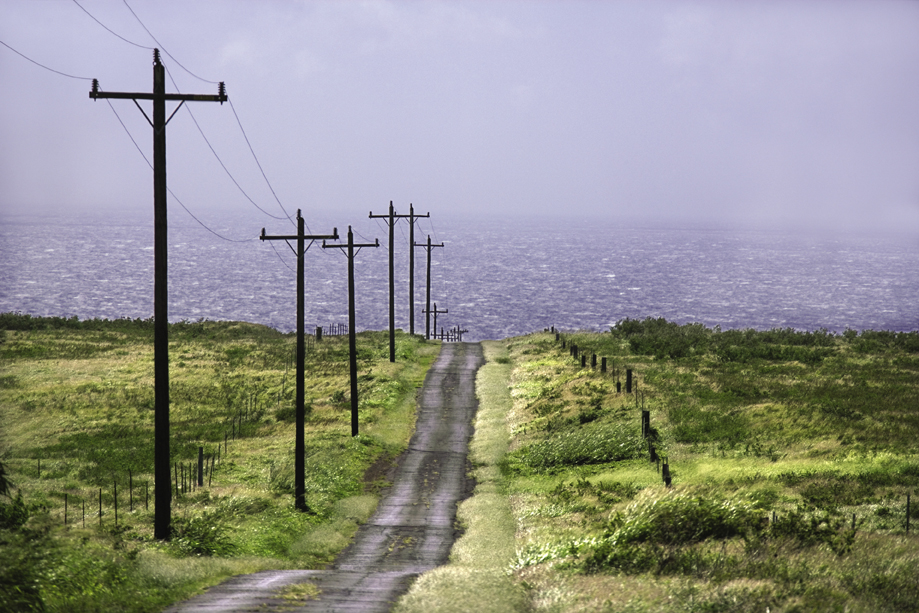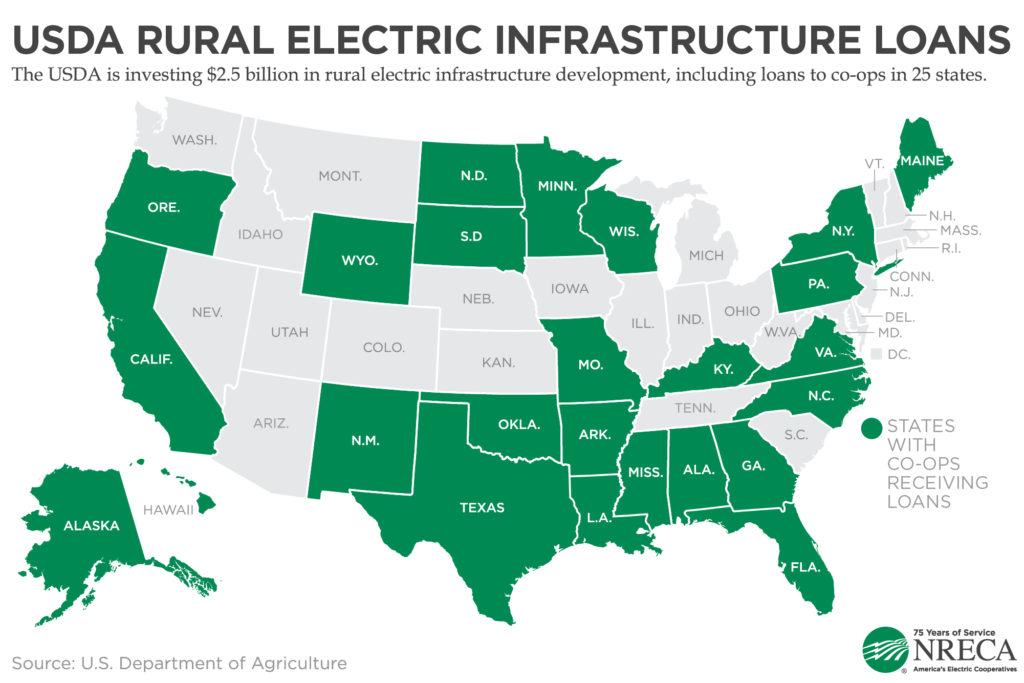
Electric cooperatives across 25 states will receive more than $2 billion in loans and loan guarantees from the U.S. Department of Agriculture to install smart grid technologies and upgrade their infrastructure. NRECA said it will help maintain and strengthen reliability of the electric grid.
The loans and loan guarantees to more than 50 electric co-ops are through USDA Rural Development’s Electric Program. In total, USDA is providing $2.5 billion to electric infrastructure projects in rural areas.
“These significant investments will help develop and maintain modern, reliable electric infrastructure that businesses and rural communities need in a 21st century economy,” Agriculture Secretary Sonny Perdue said in his Nov. 2 announcement.
NRECA CEO Jim Matheson noted that “every business, farm, home and school has one essential need in common: access to reliable power. That common denominator is a foundational strength of the entire American economy, an important fact recognized by USDA.”
“As policymakers consider ways to improve the country’s aging infrastructure, it is critical that rural America not be left behind,” Matheson added, calling USDA “an important partner” for electric co-ops.
“That partnership is critical to co-ops’ ability to maintain, expand and improve rural electric infrastructure,” he said.

Among the co-op recipients, Georgia Transmission Corporation will receive the largest single loan.
“The $342.5 million loan will fund Georgia Transmission Corporation’s 2017 Construction Work Plan at approximately $142 million, and $200 million will fund certain past and anticipated asset purchases from Georgia Power Company,” said Phil Gibson, principal financial analyst at the Tucker-based co-op.
Central Florida is attracting new residents by leaps and bounds, with SECO Energy adding more than 3,000 new accounts so far this year. It is receiving more than $125 million in USDA loans to serve these new members and continue to provide reliable service to existing members.
“The cooperative’s three-year work plan includes line construction for new services in our seven-county area, but the most concentrated growth is in The Villages in Sumter County,” said CEO Jim Duncan. He said census data shows it’s the nation’s fastest-growing area, with thousands of new homes under construction, and it accounts for 40 percent of SECO’s growth.
The other portions of SECO’s growth are in Marion and Lake County. SECO’s projected growth will put the cooperative at more than 200,000 meters before year end.
SECO also plans to replace 138 miles of old copper lines in rural parts of its service area with larger-capacity wire.
Flint Energies, headquartered in Reynolds, Georgia, will receive nearly $63.9 million.
“Flint will use its RUS funding to make investments to meet growth in the Middle Georgia region of the state,” said CEO Bob Ray. “We are also beginning our initial deployment of distribution automation, a smart grid enhancement that can reduce outage time for members.”
Ray said the remainder of the loan funds will be used to improve and upgrade existing power line infrastructure.
Coast EPA is getting $47.5 million, and Ron Barnes, president and CEO of the co-op headquartered in Kiln, Mississippi, said it will “go a long way to enhance our distribution system.”
“That is a win for our residential, commercial and industrial members,” said Barnes. “Being able to provide the most reliable service possible with the best technology available means being able to attract more businesses to our area, which in turn means more jobs and a better quality of life for the people we serve.”
A complete list of recipients is here.
Michael W. Kahn contributed to this report. Kahn and Cathy Cash are staff writers at NRECA.